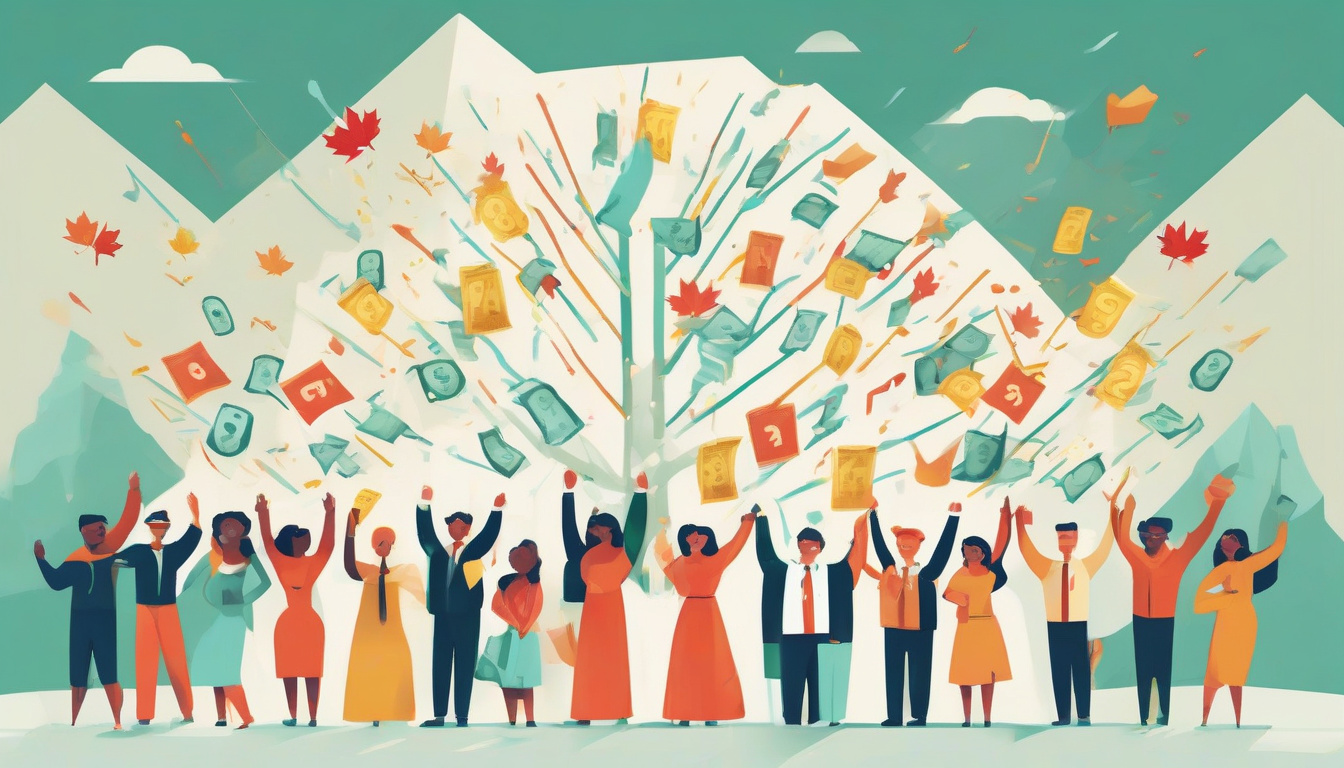Are you feeling trapped by overwhelming credit card bills and loan payments? You’re not alone—many individuals find themselves in a similar situation, struggling to regain control over their finances. In this article, we will explore effective credit debt relief programs that can help set you on the path to financial freedom. We’ll delve into the causes of credit debt, the various relief options available, how to choose the program that best fits your needs, and essential steps for maintaining your newfound financial stability. Whether you’re at the brink of bankruptcy or simply seeking to ease your monthly payments, understanding these programs can empower you to take charge of your financial future. Let’s dive into the solutions that await you!

Key Takeaways
- Credit card debt can stem from overspending, emergencies, or lack of budgeting.
- Different credit debt relief programs include debt consolidation, settlement, and counseling.
- Choosing the right program involves assessing your financial situation and goals.
- Enrolling in a credit debt relief program requires gathering necessary documents and contacting a provider.
- Maintaining financial freedom involves budgeting, saving, and avoiding future debt accumulation.
Understanding Credit Debt: Causes and Consequences
Credit debt is an increasingly prevalent issue that affects millions of individuals across the globe. Understanding the causes of credit debt is the first step in addressing this financial burden effectively. One of the primary reasons people accumulate credit debt is the propensity to overspend, often fueled by lifestyle inflation or the pressure to keep up with social standards. Additionally, unforeseen circumstances such as medical emergencies, job loss, or major life changes can lead to increased reliance on credit cards to cover everyday expenses.
Moreover, the consequences of credit debt can be far-reaching. High levels of debt can negatively impact a person’s credit score, making it more challenging to secure loans or mortgages in the future. It can also lead to increased stress and mental health issues, diminishing overall quality of life. For those seeking respite from the overwhelming strain of their debt, a credit debt relief program can offer solutions. These programs often provide access to financial counseling, debt management plans, and negotiated settlements with creditors. However, it’s crucial to thoroughly research and understand the terms and implications of any relief program before making a commitment.
Types of Credit Debt Relief Programs
### Types of Credit Debt Relief Programs
When it comes to managing overwhelming credit debt, various credit debt relief programs can help borrowers regain financial stability. Understanding these options is crucial for making informed decisions that can lead to a brighter financial future. Here are the primary types of credit debt relief programs:
####
1. Credit Counseling
Credit counseling involves working with a certified credit counselor who provides personalized guidance on budgeting, managing debt, and improving credit ratings. Counselors can help you create a plan to pay down debts and often negotiate with creditors on your behalf to lower payments or interest rates. This program is ideal for individuals seeking advice while retaining control over their finances.
####
2. Debt Management Plans (DMP)
A Debt Management Plan is a structured program where a credit counseling agency helps you consolidate your unsecured debts into one monthly payment. The agency negotiates lower interest rates with creditors and sets up a repayment schedule, typically lasting 3 to 5 years. This option works best for individuals who have steady income but are struggling with multiple debts.
####
3. Debt Settlement
In a debt settlement program, you negotiate with creditors to reduce the total amount of debt owed. Companies that specialize in debt settlement negotiate a lump-sum payment that’s less than what is owed for a reduced balance. This approach can have a significant impact on your credit score but may be useful if you are facing financial hardship and cannot manage monthly payments.
####
4. Bankruptcy
Bankruptcy is a legal process that provides individuals and businesses with the ability to eliminate some or all of their debts. Chapter 7 and Chapter 13 are the most common types of bankruptcy for individuals. While this provides immediate relief from creditors and can wipe out certain debts, it carries long-term consequences on credit and should be considered as a last resort.
####
5. Debt Consolidation Loans
This option involves taking out a new loan to pay off multiple unsecured debts. Ideally, the new loan will have a lower interest rate compared to the combined rates of existing debts. Debt consolidation can simplify payment schedules and potentially reduce total interest paid. However, it is essential to ensure you can manage the new repayment terms before proceeding.
### Conclusion
In summary, several credit debt relief programs are available to help individuals take charge of their financial situations. From credit counseling and debt management to bankruptcy options, understanding these programs empowers borrowers to make choices that lead to financial recovery.
‘The only way to achieve the impossible is to believe it is possible.’ – Charles Kingsleigh

How to Choose the Right Credit Debt Relief Program
Choosing the right credit debt relief program can be a daunting task, especially with numerous options available and various factors to consider. Start by evaluating your financial situation: gather details about your total debts, interest rates, and monthly payments. This assessment will inform your choice. Next, research different types of programs such as credit counseling, debt settlement, or debt management plans, as each serves different needs.
Look for accredited organizations; agencies that are recognized by the National Foundation for Credit Counseling (NFCC) or the Financial Counseling Association of America (FCAA) often provide trustworthy services. Read reviews and testimonials from previous clients to gauge their effectiveness. Be sure to understand the fees associated with each program; some may charge upfront fees while others are based on monthly payments. Finally, consult with a financial advisor if needed to ensure the program aligns with your long-term financial goals. Taking these steps will empower you to make a more informed decision about the right credit debt relief program for your individual circumstances.
Steps to Enroll in a Credit Debt Relief Program
Enrolling in a credit debt relief program can be a critical step towards regaining financial stability and alleviating overwhelming debt burdens. Here are the essential steps to guide you through the enrollment process and help you find a suitable program that matches your needs.
### Step 1: Assess Your Financial Situation
Before taking any action, it’s crucial to understand your financial position. Gather all relevant documents, including your income statements, expenses, debts, and credit reports. An honest evaluation will give you a clear picture of how much debt you owe, which creditors you owe money to, and what your monthly income looks like.
### Step 2: Research Available Programs
Spend some time researching various types of credit debt relief programs such as debt management plans, debt settlement, or bankruptcy. Each program has its pros and cons:
• Debt Management Plans (DMPs): These involve working with a credit counseling agency to create a repayment plan.
• Debt Settlement: This strategy involves negotiating with creditors to reduce the total amount you owe.
• Bankruptcy: Though it should be a last resort, it can help discharge some debts completely.
### Step 3: Choose a Qualified Credit Counseling Agency
Once you’ve researched the available options, look for a reputable and accredited credit counseling agency. Ensure that the agency is not only trustworthy but also has qualified counselors who can guide you through the debt relief options best suited for you. Check for credentials, reviews, and consumer protection ratings.
### Step 4: Set Up an Initial Consultation
Most credit counseling agencies offer a free initial consultation. Use this opportunity to discuss your situation in detail and hear feedback. Be prepared to provide information about your financial situation during this meeting. This step is vital as it allows the counselor to assess your requirements and inform you about your options.
### Step 5: Develop a Debt Relief Plan
During the consultation, the credit counselor will help you formulate a personalized debt relief plan. This plan could include setting up a DMP or possibly determining whether debt settlement or bankruptcy is appropriate based on your circumstances.
### Step 6: Complete Enrollment Forms
Once you’ve decided on a specific program, you’ll need to fill out application forms for the credit debt relief program. Ensure that you provide accurate information and understand the details of the program, including fees, repayment terms, and timelines.
### Step 7: Make Initial Payments
Depending on the program, some may require an initial payment before your plan goes into effect. Make sure you comply with this requirement to officially start the program.
### Step 8: Follow the Program Guidelines
After enrollment, it’s critical to stay committed to the program. Follow the guidelines closely, make consistent payments, and communicate regularly with your credit counselor for ongoing support. Doing so will increase the likelihood of successfully managing or reducing your debts significantly.
By following these straightforward steps, you can effectively enroll in a credit debt relief program that aligns with your financial goals and sets you on the path to debt freedom.

Tips for Maintaining Financial Freedom After Relief
### Tips for Maintaining Financial Freedom After Relief
Once you’ve successfully participated in a credit debt relief program, achieving financial freedom is only the beginning. To ensure that you maintain this newfound fiscal stability, there are several key strategies you can implement. First and foremost, create a budget that tracks your income and expenses meticulously. This tailored budget will provide clarity on your financial habits and help prevent overspending, making it easier to build savings and avoid accumulating new debt.
Another important tip is to establish an emergency fund. Aim to save three to six months’ worth of living expenses, which will serve as a safety net in case of unexpected costs such as medical bills or car repairs. This fund will prevent you from resorting to credit cards or loans when faced with unforeseen financial challenges.
Revisiting your financial goals is also critical. Set long-term and short-term objectives to keep you focused on positive financial behavior. Whether it’s saving for a new home, planning a vacation, or investing for retirement, having clear goals will motivate you to stick to your budget and maintain your financial discipline.
Moreover, consider seeking financial education resources or workshops that offer insights into personal finance management. Learning about investing, saving strategies, and debt management techniques will equip you with the knowledge needed to navigate your financial landscape confidently.
Lastly, monitor your credit score regularly. Keeping an eye on your credit report helps you stay aware of any discrepancies and understand how various actions affect your credit health. Trustworthy credit monitoring services can alert you to changes in your score, which is essential for maintaining good financial standing after participating in a credit debt relief program.
By implementing these tips, you can sustain the financial freedom you’ve worked hard to achieve, thus ensuring a stable and prosperous future.
Frequently Asked Questions
What are credit debt relief programs?
Credit debt relief programs are financial solutions designed to help individuals manage or reduce their credit card debts. They can take various forms, including debt consolidation, debt settlement, and credit counseling.
What types of credit debt relief programs are available?
The main types of credit debt relief programs include debt consolidation (combining multiple debts into one loan), debt settlement (negotiating with creditors to pay less than owed), and credit counseling (receiving professional guidance on managing debts).
How do I choose the right credit debt relief program for my situation?
To choose the right program, assess your financial situation, review your total debt, monthly payments, and income. Consider the pros and cons of each type of program, and consult with a financial advisor or credit counselor for personalized advice.
What steps do I need to take to enroll in a credit debt relief program?
To enroll, start by researching different programs and providers. Gather your financial documents, schedule a consultation with the program of your choice, and complete any necessary paperwork to initiate the debt relief process.
What can I do to maintain financial freedom after completing a credit debt relief program?
Maintain financial freedom by creating a budget, avoiding new debt, establishing an emergency fund, and regularly monitoring your credit report. It’s also beneficial to seek financial education and consider guidance from a financial advisor.
